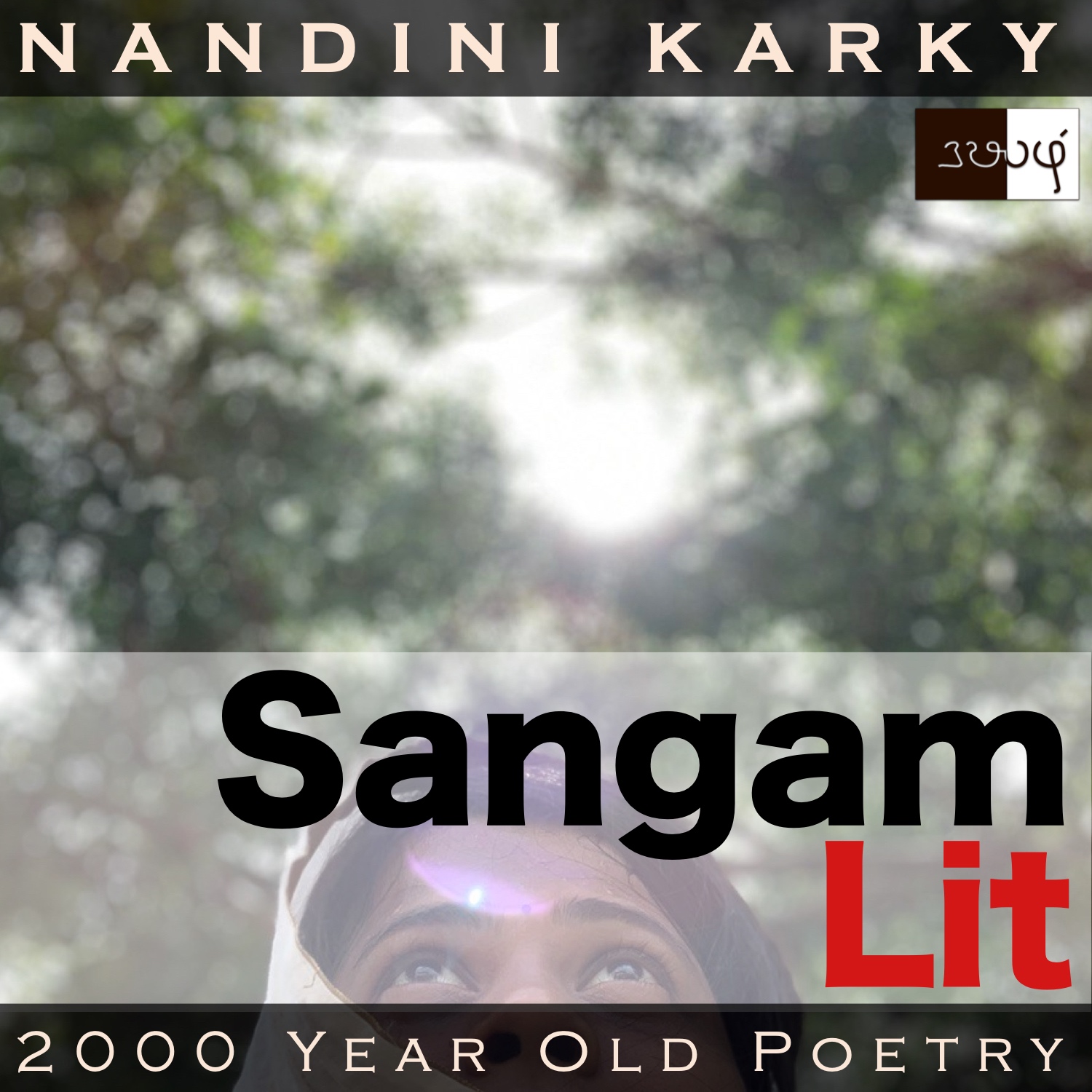Podcast: Play in new window | Download
Subscribe: Apple Podcasts | Spotify | Amazon Music | Android | iHeartRadio | TuneIn | RSS | More

In this episode, we relish a song of passion by an ancient shore, portrayed in Sangam Literary Work, Natrinai 101, written by Velliyanthinnanaar, this being his only Sangam poem. The poem is in the ‘Neythal’ landscape or the coastal regions and speaks in the voice of the man to be overheard by the confidante, relaying his love for the lady.
முற்றா மஞ்சட் பசும் புறம் கடுப்பச்
சுற்றிய பிணர சூழ் கழி இறவின்
கணம் கொள் குப்பை உணங்கு திறன் நோக்கி,
புன்னை அம் கொழு நிழல் முன் உய்த்துப் பரப்பும்
துறை நணி இருந்த பாக்கம் உம் உறை நனி
இனிதுமன்; அளிதோ தானே-துனி தீர்ந்து,
அகன்ற அல்குல் ஐது அமை நுசுப்பின்,
மீன் எறி பரதவர் மட மகள்
மான் அமர் நோக்கம் காணா ஊங்கே.
As a shining beacon of health, the verse welcomes us with ‘முற்றா மஞ்சள்’ meaning ‘unripe turmeric’, the same plant celebrated as a cure for things ranging from a sore throat to cancer. If there’s a plant reference, Sangam poets have shown that we can expect an animal reference to follow shortly and as expected, we see it in the curvy form of ‘இறவு’ meaning ‘shrimp’. I was startled somewhat to find ‘குப்பை’ here, for now, it means ‘trash’! I was relieved to find that ‘குப்பை’ means a ‘heap’ here and was delighted that those shores of yesterday were free of the trash mounds of today! Next, we meet the word ‘பாக்கம்’, which may sound familiar to you, if you have lived or travelled extensively in Chennai, for we find many areas of the city having the suffix of ‘paakkam’ as in ‘Pattinapaakkam’, ‘Manapaakkam’ and ‘Madipaakkam’. Turns out the word ‘பாக்கம்’ has the meaning of a ‘sea-side village.’ Hardly villages at the moment, but our current ‘paakkams’ are at least close to the sea, as defined then! The phrase ‘நனி இனிது’ sounding so delicious to the ears means ‘very sweet’! Speaking of melodies, the poem is musical with its many rhythmic elements such as ‘முற்றா – சுற்றிய’, ‘துறை – உறை’ and ‘நனி’ – துனி’!
With that music gently echoing in our ears, let’s turn our attention to the meaning of the verse. The man has seen the lady and has fallen in love with her. She too seems to reciprocate his love subtly with her eyes. One day, seeing the lady’s confidante pass by on his path, the man says, “Like the fresh, green surface of tender turmeric, the shrimp from the surrounding seas has rough, uneven skin. To dry heavy heaps of such shrimp, these are spread in the thick shade of the ‘punnai’ trees in this village by the sea. In the past, this very village was sweetness personified to me! Isn’t it pitiable that it does not appear so to me now? It’s only because I do not get to see the doe-like glances from the eyes of that fisherfolk’s young daughter, with wide loins and a delicate waist. How will I slay my sorrow?” With these words, the man passes on a subtle message to the confidante, that he has won the graces of the lady and that the confidante must now help him to tryst with her.
Walking on, let’s turn our attention to little things that fascinate us and delve deeper into the expanse of this little verse. First is turmeric. Anyone who has knowledge of Indian cuisine is sure to be familiar with this cheerful, yellow root. People have always wondered about the origin of this plant and glad to find this ‘matter-of-fact’ two thousand year old reference. Turmeric is our very own and perhaps, a thing that unites India. Be it the north or the south, illness are kept at bay with a pinch of this power-packed plant. Coming to the song, the reference to turmeric is to present a parallel to the shrimp fished out of the sea. The song says that both the turmeric plant and the shrimp have the same rough surface and yet again, the oneness of life is sketched for us, in words. Take a moment and glance at the pictures of both the turmeric root and the little shrimps from the sea and you will be stunned by the similarity in appearance. From turmeric to shrimp, the poem leads us to the shade of the ‘punnai’ or the ‘laurelwood’ trees, under which these shrimps are laid out to dry by the fisherfolk. Hold on to that image of the shady tree by the shore. The man then talks about how that sea-side village gave him so much pleasure with its beauty and life but not so now. Why, we wonder? What has changed? Has there been a calamity by the sea? In these peaceful Sangam shores, calamities seem to occur only within the minds. As predicted, the man reveals that he doesn’t find joy and beauty anymore because he sees no more those doe-like glances of the lady. He goes on to describe the beauty of that lady intimately, to hint to the confidante that he knows her well and is confident of having secured her love. He finishes by wishing there was someone to end the sorrow in his heart, a gentle nudge to the confidante. Coming back to the reference of that ‘punnai’ tree, we understand now that the man brings in that reference to indicate that his heart will be revived if he were to meet with the lady under the shade of that graceful ‘punnai’ and once again, bask in the light of her eyes.
In this poem, we find a nuanced understanding of the workings of the mind. The world outside doesn’t change but yet it appears to have, to the mind within. So then, is joy and sorrow to be found in the material world outside? Nay! A song to say that there is nothing to be found in the world outside that we don’t bring along from within!




Share your thoughts...